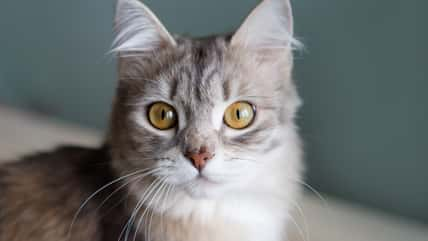Researchers Have Trained Giant Rats Wearing Vests To Sniff Out Smuggled Goods, Combating The Illegal Wildlife Trade Of Threatened Animals And Plants

In the past, African giant pouched rats have been able to learn how to detect explosives and the pathogen that causes tuberculosis.
Now, a team of researchers has trained the rats to identify the scent of smuggled goods, such as elephant ivory, rhino horn, pangolin scales, and African blackwood. These animals and plants are classified as threatened and are at a high risk of extinction.
“Our study shows that we can train African giant pouched rats to detect illegally trafficked wildlife, even when it has been concealed among other substances,” said Dr. Isabelle Szott, a co-author of the study and a researcher at the Okeanos Foundation.
Poachers and wildlife traffickers will employ elaborate methods to disguise their illegal goods, making it easier to smuggle them out of a country. They might paint ivory tusks black, coat them in chocolate, or wrap them in packaging to make them look like candy bars.
They might hide pangolin scales in boxes of cashews or in containers with fake walls and secret compartments. Or, they’ll cover up the products in smelly materials to sneak past sniffer dogs.
For the new study, the researchers worked with 11 rats named Kirsty, Marty, Irwin, Betty, Teddy, Attenborough, Ivory, Ebony, Fossey, Desmond, and Thoreau.
Not only can the rodents sniff out contraband items, but they can also alert their handlers to the discoveries by using their front paws to tug on a small ball attached to a red vest they wear when working. The tugging triggers a beeping sound.
The rats underwent several stages of training. The team first taught them how to stick their noses in a hole where scent samples were placed. When they performed the “nose poke” behavior successfully, they were rewarded with flavored pellets.
Once they had mastered that skill, the researchers introduced them to the odors of four commonly smuggled items and the objects typically used to mask the scent of wildlife.

Farinoza – stock.adobe.com – illustrative purposes only, not the actual rat
The target odors were elephant tusks, rhino horns, pangolin scales, and African blackwood, a tree often used to make musical instruments.
The non-target odors included electric cables, washing powder, and coffee beans. The rats had to learn how to tell the difference between the target and non-target odors.
They were also trained to remember smells. When they were re-introduced to scents they had not encountered for five and eight months, they still remembered the smells they had been taught.
By the end of the training, a total of eight rats were able to identify the scents of four commonly smuggled wildlife species and 146 non-target smells.
If the trained rats become employed, they could help fight back against a major global problem. Per the United Nations Environment Program, the illegal wildlife trade is worth about $7 billion to $23 billion a year.
Smugglers also know that Africa, in particular, has a weak spot when it comes to detection methods in ports, seaports, and airports. Additionally, they tend to transport wildlife products from poorer countries.
African giant pouched rats could play an instrumental role in busting these crooks. They are cheaper to maintain and are small and nimble, allowing them to explore hard-to-reach nooks and crannies.
“Existing screening tools are expensive and time intensive, and there is an urgent need to increase cargo screening…rats are cost-efficient scent detection tools,” said Szott.
“They can easily access tight spaces like cargo in packed shipping containers or be lifted up high to screen the ventilation systems of sealed containers.”
Sign up for Chip Chick’s newsletter and get stories like this delivered to your inbox.
More About:Animals





